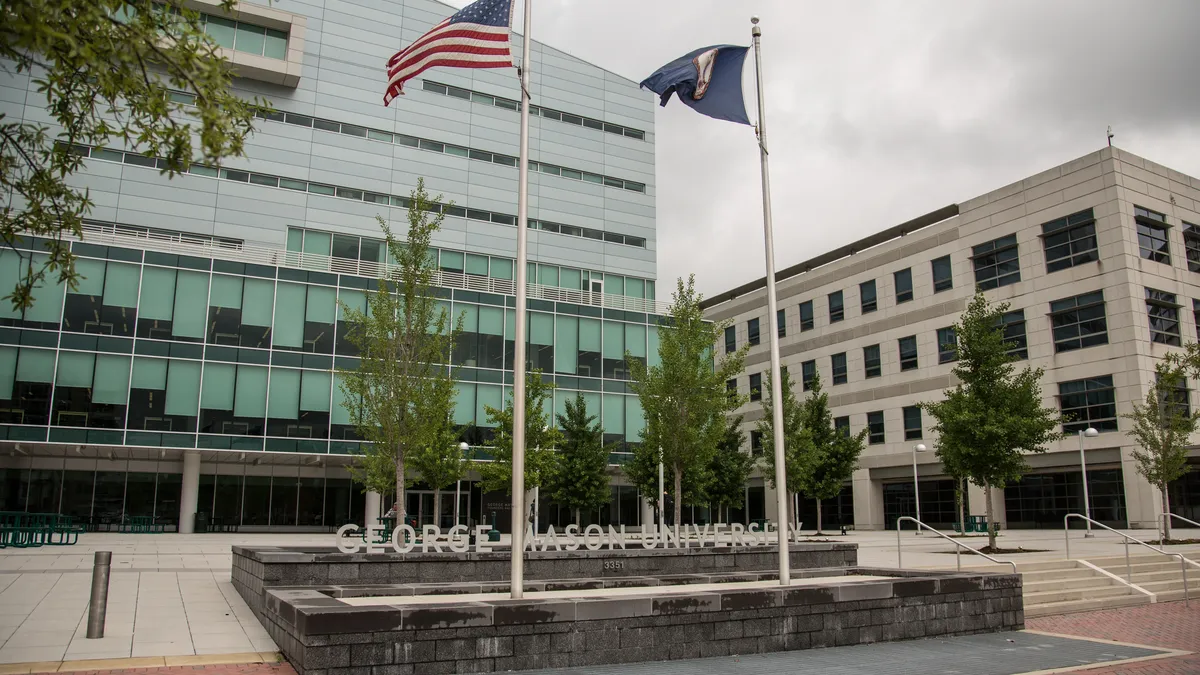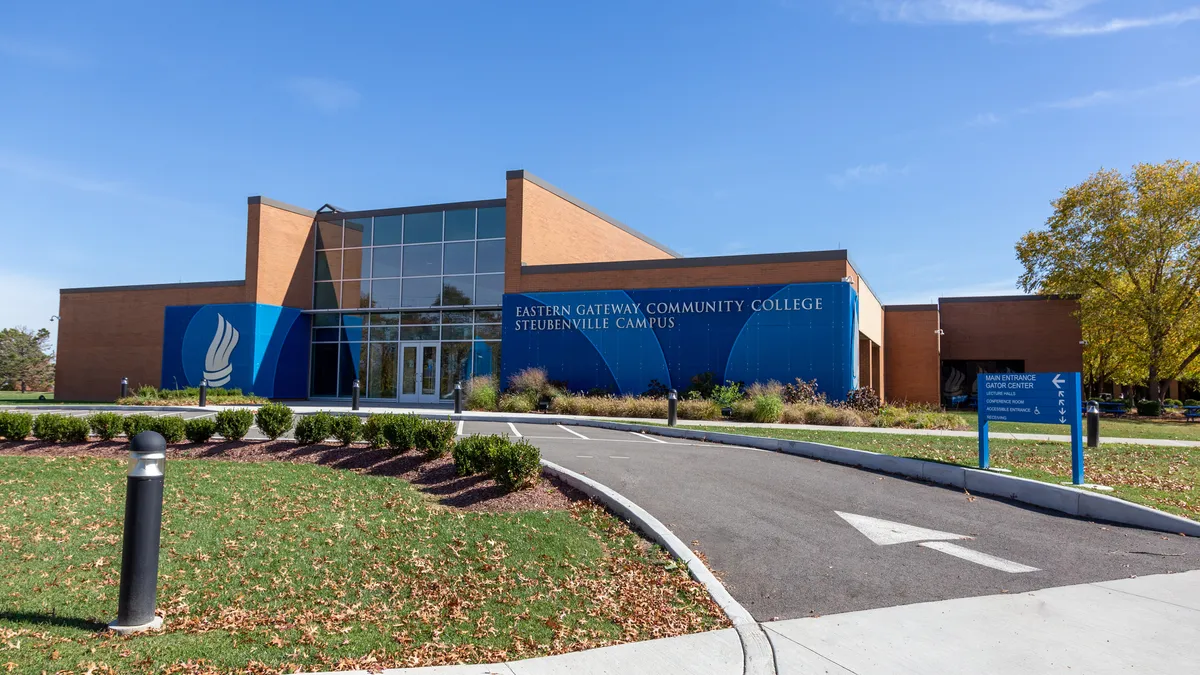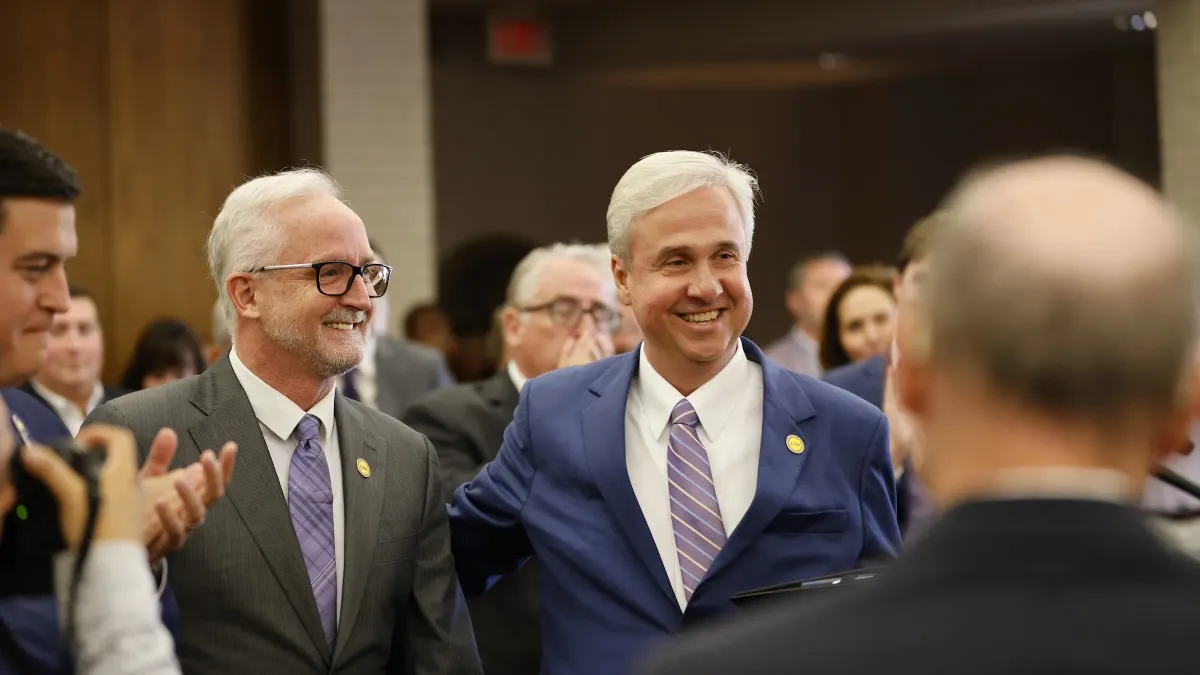Hampshire College is laying off 9% of employees in a major restructuring of operations amid lower-than-expected enrollment growth for the upcoming academic year, the institution’s president confirmed Monday.
The move comes for an institution often cited as a turnaround model among small colleges facing financial distress.
Hampshire's restructuring involves consolidating the college’s financial aid, enrollment, events and fundraising functions into a new division with the overarching title of “Institutional Support.”
The Massachusetts-based private nonprofit is also redistributing the responsibilities of its student affairs office across multiple units, including academic affairs and its Justice, Equity, and Antiracism division.
Hampshire’s leaders expect those moves to eliminate about 29 positions and save $2.7 million annually, college President Edward Wingenbach told Higher Ed Dive in an interview Monday.
“We're still growing, enrollment is still increasing,” Wingenbach said. “This is really more about ensuring that we can continue to be successful as the parameters of that growth change.”
Senior leaders at the college will be taking a 13% pay cut as part of the budget-saving effort, the Hampshire spokesperson said.
The restructuring also comes on the heels of an announced suspension of retirement contributions for fiscal year 2025.
Decelerating growth
Many of the cuts, which were announced to campus Monday morning, are to administrative roles including at the senior director level, which will mean more staff reporting to fewer division leaders. The college is asking division heads and vice presidents "to increase the amount of hands-on engagement they have,” Wingenbach said.
Conversations around potential consolidation and restructuring began earlier this year as it became clear Hampshire’s enrollment — while still growing year over year — would fall short of targets.
The institution has been rebuilding its enrollment and financial standing since 2019, a precipitous year for the college that brought it near the point of closure and led it to admit only a partial incoming class that fall.
Today, Hampshire expects to welcome around 900 students this fall, up from around 500 just two years prior.
Still, last spring it became clear to leadership that enrollment growth was going to fall short of hopes. In April 2023, the college predicted 940 students for fall 2024.
In explaining the missed enrollment marks, Wingenbach referenced this year’s travails in higher ed with the Free Application for Federal Student Aid, noting that 38% of Hampshire’s students are eligible for Pell Grants.
The U.S. Department of Education released the FAFSA in late December, about three months later than usual, and the process has been beset by delays and technical glitches that have made it difficult for some students and their families to complete the form.
Beyond any enrollment speed bumps the FAFSA issues may have wrought, Wingenbach said that Hampshire is committed to balancing its budget by the 2026-27 academic year. With enrollment growth slowing, leaders began looking at the expense side of Hampshire’s budget to meet its financial sustainability goals.
“I had to sit down and say, ‘Okay, of all these possible ways we might rethink Hampshire in staffing and administrative structuring, which are the ones that are most likely to work?’” Wingenbach said.
With the consolidation plan, the college tried to balance savings and a sustainable budget while holding onto the “excellent progress” on student retention and academic programs, according to Wingenbach.
Leaders looked at where they might be able to reduce complexity and forgo services “in ways that don't undermine the core values of the college,” Wingenbach said. “We didn't start with, ‘How do we get to X number?’”
‘We need to be realistic’
Since the rocky year of 2019, Hampshire has undergone a major curriculum transformation, replacing traditional majors and departments with curricula focused on addressing pressing global issues such as climate change and racism.
The college has also raised more than $43 million from donors. But, Wingenbach said, Hampshire needs to be able to “stand on our own two feet” — meaning to get to a financial place where donors don’t have to support operating activities.
While Hampshire’s enrollment has been rebounding from 2019 levels, the college has continued to operate in the red. In fiscal 2023, it ran a total operating deficit of $3.4 million. That figure represented a more than tenfold increase from the prior year, due to the absence of nearly $3.7 million in federal COVID-19 emergency funds that had infused support.
Even if the college’s outlook for enrollment growth accelerates in the next year or two, the slowdown will have continued ramifications because of this year’s smaller-than-expected class size. However, if growth picks up, that would mean the college can begin investing in new areas again.
“We have to know we can be sustainable at 2026-27,” regardless of whether enrollment starts to trend back up in the short term, Wingenbach said. “We have to work with the data we have. We need to be realistic about our budget.”
But still, pointing to the college’s experimentation with curriculum and programs, Wingenbach emphasized the college’s continued ambition.
“If you're not ambitious as a small college, then you're not going to be successful,” Wingenbach said. At the same time, he noted that colleges of Hampshire’s size have to be careful and thoughtful with their resources.
“What we're doing right now is incredibly difficult, and it’s going to affect a lot of people,” he said. “But it also ensures that we will continue to be … this ambitious, experimenting institution that I think is such an important example for higher education.”





















